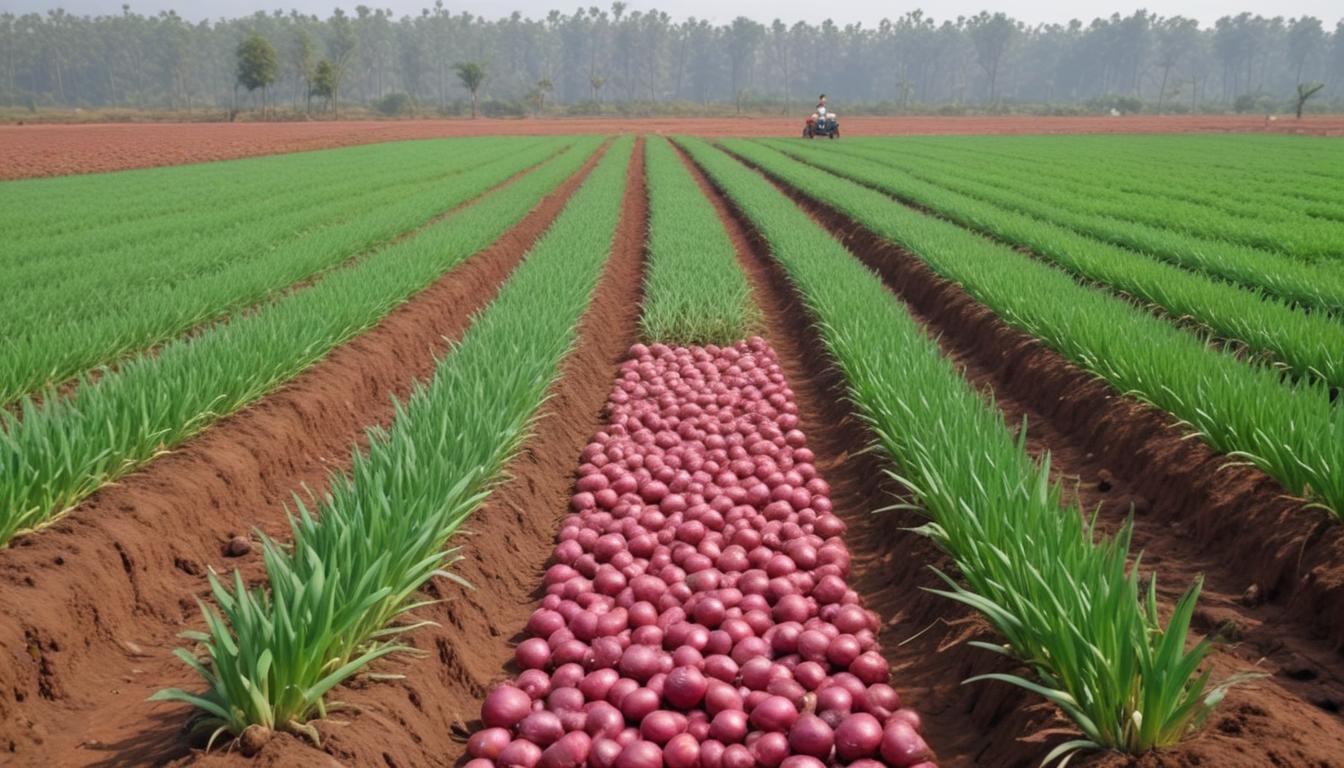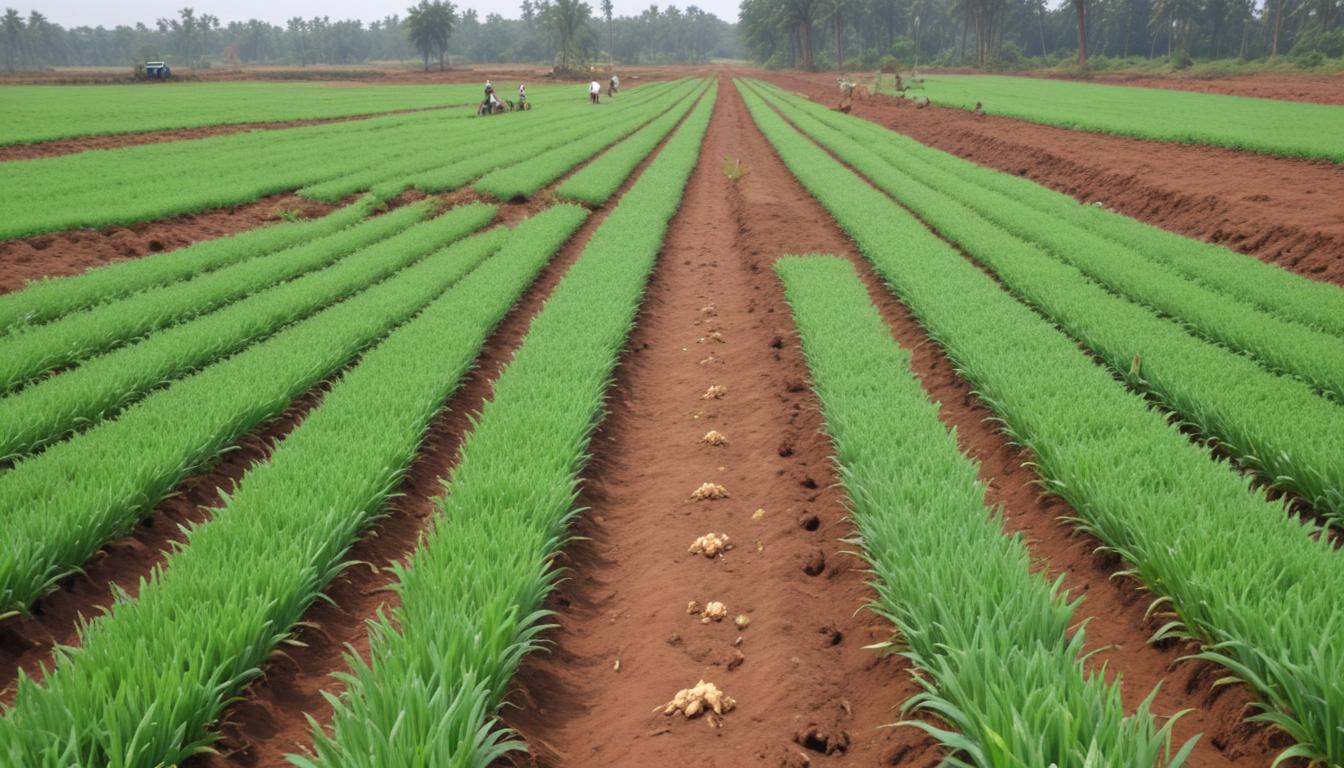Maharashtra’s onion farmers are currently grappling with severely depressed prices for their produce. The wholesale markets are flooded with onions, leading to a dramatic price slump. Farmers are reporting that they are unable to recover even their basic input costs, let alone make a profit. The situation is so dire that many are struggling to afford transportation to the market, and some are even abandoning their crops in the fields.
The primary reason for this agricultural crisis is an oversupply of onions in the market. A bumper harvest, coupled with a lack of export demand, has created a glut. The consequences of this oversupply are far-reaching, impacting not only the onion farmers themselves but also the rural economy of Maharashtra. Many farmers are heavily indebted and face mounting financial pressure. This price slump exacerbates existing farmer distress in the region.
Several factors contribute to the oversupply. Improved farming techniques and increased acreage under onion cultivation have led to higher yields. However, infrastructure limitations, such as inadequate storage facilities, mean that a large portion of the harvest is vulnerable to spoilage. This forces farmers to sell their produce quickly, often at rock-bottom prices, further fuelling the price slump and deepening the ongoing agricultural crisis.
Impact Of Weather
The woes of Maharashtra’s onion farmers are compounded by increasingly erratic weather patterns. Unseasonal rains and prolonged dry spells have significantly impacted onion production cycles. These unpredictable weather events lead to both reduced yields and compromised quality, further exacerbating the existing agricultural crisis. Onion crops are particularly vulnerable to variations in temperature and moisture levels, making them susceptible to crop damage caused by climatic anomalies.
Specifically, unseasonal rains during the harvesting period can lead to bulb rot and discoloration, rendering the onions unsuitable for sale in the premium market. This forces farmers to sell their produce at discounted rates, contributing to the already crippling price slump. Conversely, prolonged dry spells can stunt the growth of the onions, leading to smaller bulbs and lower overall yields. This double whammy of adverse weather conditions places immense pressure on onion farmers, pushing many further into debt and deepening farmer distress.
The changing climate presents a long-term challenge to onion cultivation in Maharashtra. Farmers need access to better weather forecasting and advisory services to mitigate the impact of unpredictable weather. Investment in drought-resistant onion varieties and improved irrigation infrastructure is also crucial to ensure the long-term sustainability of onion farming in the region. Without such interventions, the vulnerability of onion farmers to weather-related shocks will only increase, perpetuating the cycle of price volatility and economic hardship.
Government Intervention Needed
To alleviate the ongoing agricultural crisis and farmer distress, decisive government intervention is crucial. A multi-pronged approach is needed to address both the immediate price slump and the long-term challenges facing onion farmers in Maharashtra. One immediate step would be the implementation of a price stabilisation scheme to ensure that farmers receive a minimum support price for their produce. This would provide a safety net and prevent them from being forced to sell their onions at a loss.
Beyond immediate relief, investment in infrastructure is essential. This includes expanding storage capacity to reduce post-harvest losses due to spoilage. Modern, climate-controlled storage facilities can significantly extend the shelf life of onions, allowing farmers to sell their produce at more favourable times and avoid being forced to sell during periods of oversupply. Improved transportation networks are also vital to ensure that onions can be moved quickly and efficiently from farms to markets, both domestically and internationally.
Furthermore, the government should actively promote onion exports to diversify markets and reduce reliance on domestic consumption. This requires negotiating favourable trade agreements with other countries and providing incentives to exporters. Supporting research and development to develop drought-resistant onion varieties and improve farming techniques is also crucial for long-term sustainability. Finally, access to affordable credit and insurance schemes can help onion farmers manage risk and cope with unexpected losses due to unseasonal rains or crop damage. These measures can help prevent future price slump.

